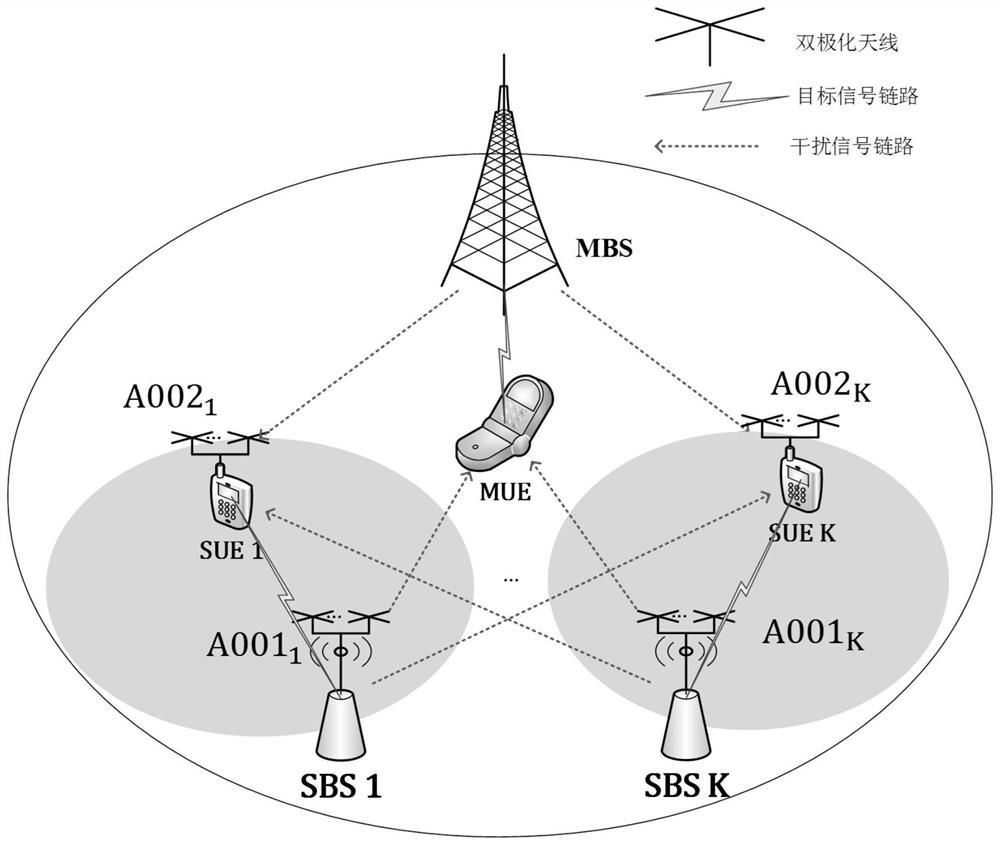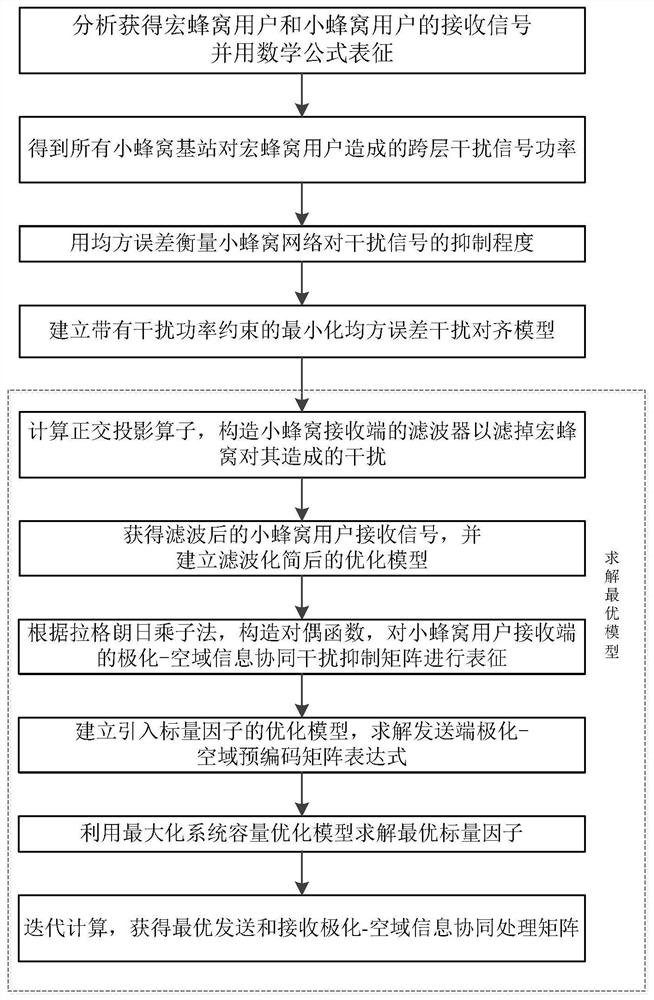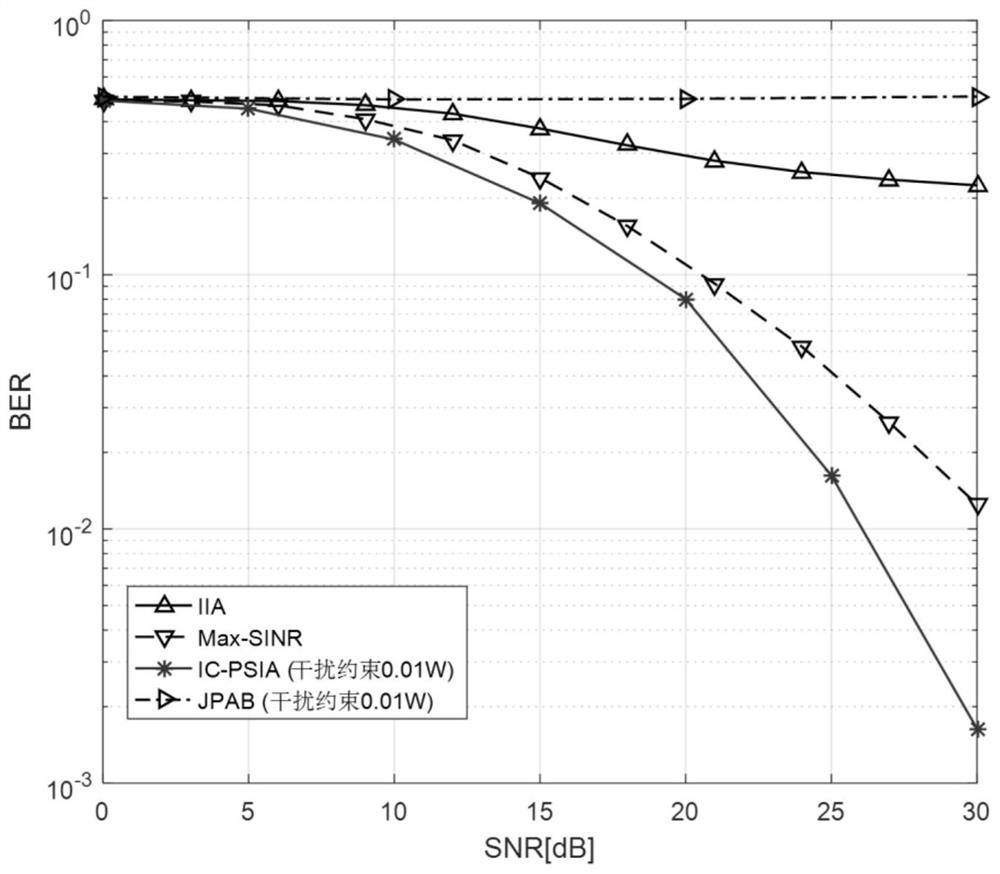A Cognitive Heterogeneous Cellular Network Interference Alignment Method Based on Cooperative Processing of Polarization-Space Domain Information
A cellular network and interference alignment technology, which is applied in multiplexing communication, electrical components, orthogonal multiplexing systems, etc., can solve problems such as performance needs to be improved, calculation and solution complexity, etc., to eliminate cross-layer interference and reduce Downlink signal transmission error, the effect of improving the total capacity
- Summary
- Abstract
- Description
- Claims
- Application Information
AI Technical Summary
Problems solved by technology
Method used
Image
Examples
Embodiment Construction
[0018] In order to facilitate those of ordinary skill in the art to understand and implement the present invention, the present invention will be further described in detail below in conjunction with the accompanying drawings.
[0019] A cognitive heterogeneous cellular network interference alignment method based on polarization-space information collaborative processing provided by the present invention uses orthogonal projection filtering and interference alignment technology to detect cross-layer and same-layer interference existing in cognitive heterogeneous cellular networks After processing, the polarization-space collaborative processing matrix of the small cell at the base station transmitting end and the user receiving end are respectively optimized, and the alignment and elimination of the cross-layer interference generated by the macro cell to the small cell user and the same-layer interference between the small cells are realized. The purpose is to align the cross-l...
PUM
 Login to View More
Login to View More Abstract
Description
Claims
Application Information
 Login to View More
Login to View More - R&D
- Intellectual Property
- Life Sciences
- Materials
- Tech Scout
- Unparalleled Data Quality
- Higher Quality Content
- 60% Fewer Hallucinations
Browse by: Latest US Patents, China's latest patents, Technical Efficacy Thesaurus, Application Domain, Technology Topic, Popular Technical Reports.
© 2025 PatSnap. All rights reserved.Legal|Privacy policy|Modern Slavery Act Transparency Statement|Sitemap|About US| Contact US: help@patsnap.com



